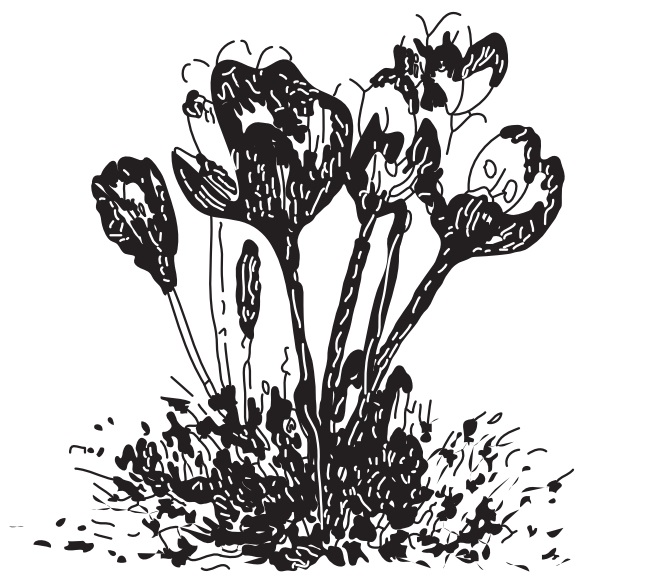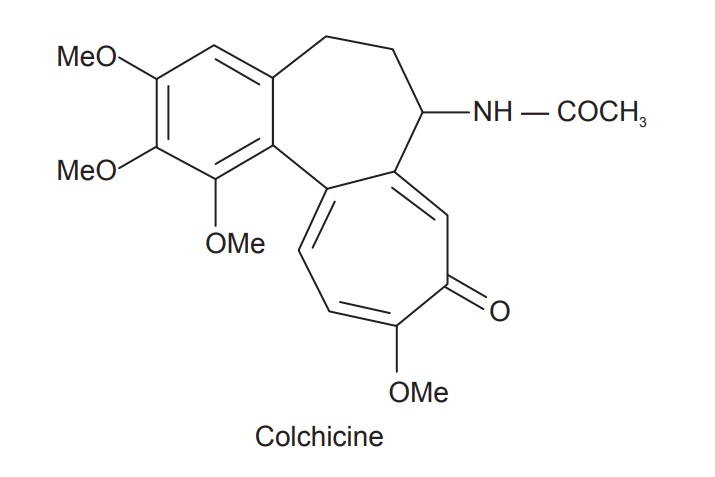Colchicum
| Home | | Pharmacognosy |Chapter: Pharmacognosy and Phytochemistry : Drugs Containing Alkaloids
Colchicum consists of dried ripe seeds and corms of Colchicum autumnale Linn., belonging to family Liliaceae.
COLCHICUM
Synonyms
Autumn Crocus, Cigdem, Colquico, Meadow Saffron, Naked Boys,
European Colchicum Seed.
Biological Source
Colchicum consists of dried ripe seeds and corms of Colchi-cum autumnale Linn., belonging to
family Liliaceae.
Geographical Source
It is mainly found in Central and South Europe, Germany,
Greece, Spain, Turkey and England.
Cultivation and Collection
The plant prefers light (sandy), medium (loamy) and heavy
(clay) soils and requires well-drained soil. The plant prefers acid, neutral
and basic (alkaline) soils. It can grow in semishade or no shade. It requires
moist soil. Seed are sown as soon as it is ripe in early summer in a seed bed
or a cold frame. Germination can be very slow, taking up to 18 months at 15°C.
It is best to sow the seed thinly so that it is not necessary to transplant the
seedlings for their first year of growth. Liquid fertilizers are applied during
their first summer to ensure they get sufficient nourishment.
Seedlings are taken out once they are dormant, putting
perhaps two plants per pot, and allowed to grow them in a greenhouse or frame
for at least a couple of years. The seedlings take 4–5 years to reach flowering
size.
Division of the bulbs in June/July when the leaves have died
down. Larger bulbs can be planted out direct into their permanent positions,
though it is best to pot up the smaller bulbs and grow them on in a cold frame
for a year before planting them out. The plant can be divided every other year
if a quick increase is required
The plant bears leaves and capsular fruits in next spring.
From June to July brown fruits are collected and placed in muslin bags. During
ripening seeds become dark in colour and arc covered by a sweet saccharine
secretion. Seeds are separated by sifting. Colchicum seeds are derived from,
amphitrophous ovules and have a short raphe. The corms are harvested in mid to
late summer when the plant has fully died down. They are dried and used.
Characteristics
Seeds are 2–3 mm in diameter, globular. Outer Surface is
dark reddish-brown, pitted, very hard. Endosperm is large, hard and oily. It is
odourless; bitter and acrid in taste.
The corm or root is usually sold in transverse slices,
notched on one side and somewhat reniform in outline, white and starchy
internally, about 1/8 inch thick and varying from 3/4 to 1 inch in diameter.
Taste sweetish, then bitter and acrid and odour radish-like in fresh root, but
lost in drying.

Chemical Constituents
The active principle is said to be an alkaline substance of
a very poisonous nature called Colchicine. Besides colchi-cine, demecolcine and
other alkaloids are present. They also contain resin, called colchicoresin,
fixed oil, glucose and starch.

Chemical Test
Colchicum corm with sulphuric acid (70%) or conc. HCl
produces yellow colour due to the presence of colchicines.
Uses
Both the corm and the seeds are analgesic, antirheumatic,
cathartic and emetic. They are used mainly in the treatment of gout and
rheumatic complaints, usually accompanied with an alkaline diuretic. Leukaemia
has been successfully treated with autumn crocus, and the plant has also been
used with some success to treat Bechet’s syndrome, a chronic disease marked by
recurring ulcers and leukaemia. A very toxic plant, it should not be prescribed
for pregnant women or patients with kidney disease, and should only be used
under the supervision of a qualified practitioner.
Marketed Products
It is one of the ingredients of the preparation known as
Aujai capsules (Crown Pharma Exports).
